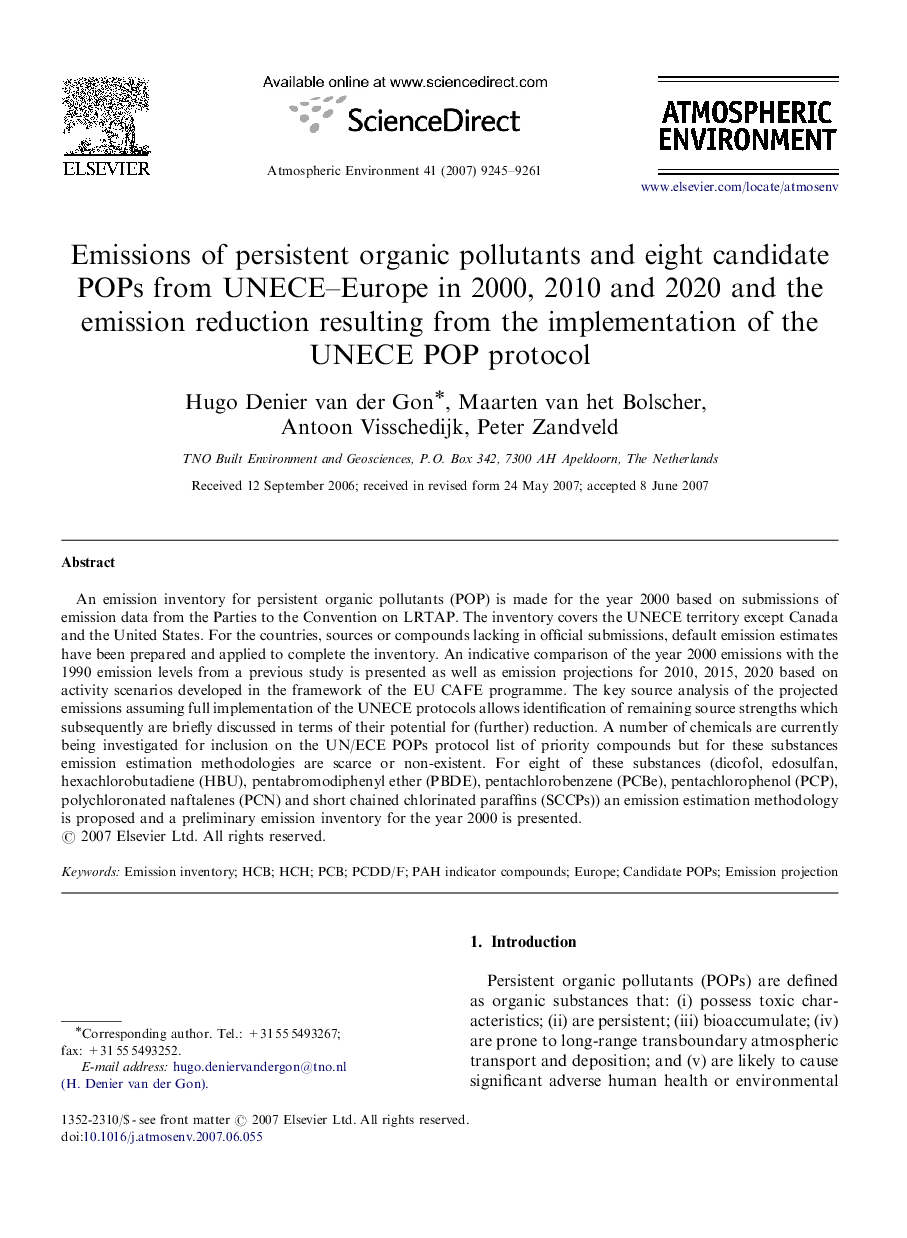| Article ID | Journal | Published Year | Pages | File Type |
|---|---|---|---|---|
| 4442867 | Atmospheric Environment | 2007 | 17 Pages |
Abstract
An emission inventory for persistent organic pollutants (POP) is made for the year 2000 based on submissions of emission data from the Parties to the Convention on LRTAP. The inventory covers the UNECE territory except Canada and the United States. For the countries, sources or compounds lacking in official submissions, default emission estimates have been prepared and applied to complete the inventory. An indicative comparison of the year 2000 emissions with the 1990 emission levels from a previous study is presented as well as emission projections for 2010, 2015, 2020 based on activity scenarios developed in the framework of the EU CAFE programme. The key source analysis of the projected emissions assuming full implementation of the UNECE protocols allows identification of remaining source strengths which subsequently are briefly discussed in terms of their potential for (further) reduction. A number of chemicals are currently being investigated for inclusion on the UN/ECE POPs protocol list of priority compounds but for these substances emission estimation methodologies are scarce or non-existent. For eight of these substances (dicofol, edosulfan, hexachlorobutadiene (HBU), pentabromodiphenyl ether (PBDE), pentachlorobenzene (PCBe), pentachlorophenol (PCP), polychloronated naftalenes (PCN) and short chained chlorinated paraffins (SCCPs)) an emission estimation methodology is proposed and a preliminary emission inventory for the year 2000 is presented.
Related Topics
Physical Sciences and Engineering
Earth and Planetary Sciences
Atmospheric Science
Authors
Hugo Denier van der Gon, Maarten van het Bolscher, Antoon Visschedijk, Peter Zandveld,
